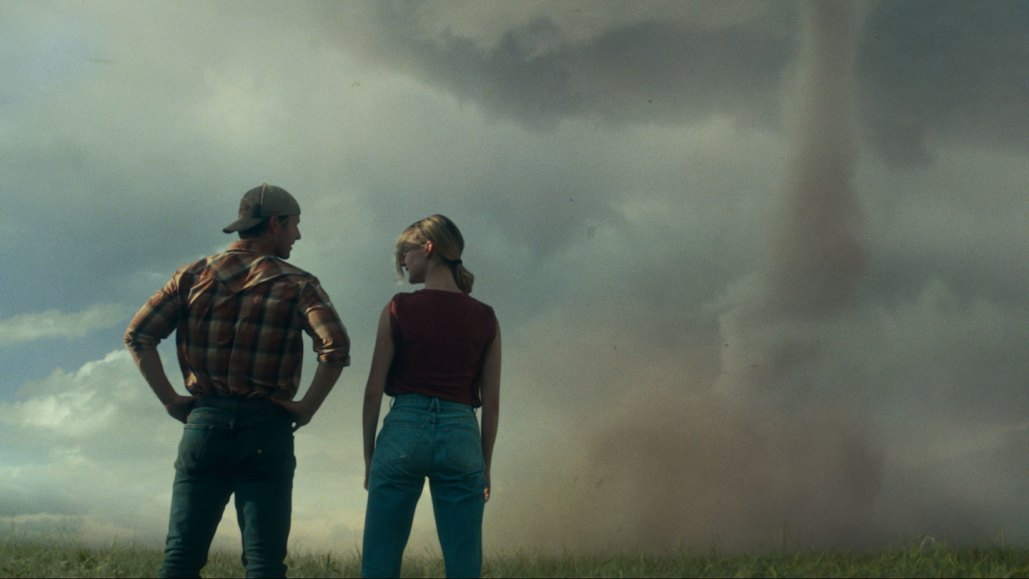"Can You Tame a Tornado? Twisters Investigates and Reveals the Truth"

What does it take to tame a tornado? That’s the scientific conundrum swirling through the plot of the new weather disaster film Twisters, which hits U.S. theaters July 19.
In this standalone sequel to the 1996 box office smash Twister, we follow Kate, played by Daisy Edgar-Jones, as she returns to storm chasing five years after surviving a terrible accident in the field. Her former colleague Javi, played by Anthony Ramos, convinces her to join his team collecting tornado data, and they wind up racing to the scene against popular social media star Tyler, portrayed by Glen Powell, and his adrenaline-fueled storm chasing team.
Science News has partnered with Trusting News to gather feedback on the potential use of AI in journalism. Currently, we do not publish any content produced by generative AI (see our policy). We do want to hear your views on how Science News could use AI responsibly. Let us know by participating in a short 10 question survey.
As in the previous film, Twisters’ protagonists want to help people affected by these highly destructive forces of nature. In the 1996 movie, Jo Harding, played by Helen Hunt, aimed to collect enough data to create an advanced warning system. In Twisters, the scientific stakes have escalated. Kate has a theory on how to destabilize or “tame” a tornado. But is such a thing possible?
Science News went to the movies with Maria Molina, a meteorologist at the University of Maryland in College Park, to find out how much of Twisters is grounded in reality and how much is getting swept up in stormy storytelling. We also spoke with Kevin Kelleher, retired director of the Global Systems Laboratory at the U.S. National Oceanic and Atmospheric Administration’s Earth System Research Laboratories. He worked as the technical consultant on 1996’s Twister and spent more than two years as the tornado consultant for Twisters.
Ultimately, Twisters is a movie, so no one can realistically enter the theater thinking that this will be a perfect, scientifically accurate portrayal of weather phenomena that, in reality, we know so little about.
“Even after 30 years from the first movie to now, we really don’t know exactly how tornadoes form,” Kelleher says. “We know how the rotation starts in mid- and upper-level sections of the storm and works its way down to the surface. But we know now that that’s not the whole story.”
Molina still calls the movie fun, and she chuckled knowingly at some of the scientific elements she recognized along the way. “They did try to make quite a few things accurate,” she says.
Warning: Spoilers for Twisters below.
OK, so is it really possible to destabilize a tornado?
When we first meet Kate, she and her research team attempt to tame a tornado by releasing a polyacrylate chemical into the tornado’s funnel. According to Kate’s theory, the chemical, a type of polymer, would absorb the moisture in the air that serves as fuel for the tornado, causing it to die down.
“I think that was something that maybe, to me, was sort of making me cringe,” Molina says.
Kelleher admits that this is the most fantastical plot point of the movie. However, he explains that there is a basis to the idea. Certain polyacrylates are superabsorbent polymers that can hold up to 1,000 times their weight in water. In theory, if you injected enough of the polymer into the tornado’s funnel, it would absorb moisture and the water would then fall to the ground, thus having some influence on the storm.
“Of course, it’s a matter of scale,” he says. “You can’t hardly imagine getting enough of this chemical in the storm to make a difference.”
Naturally, a modified version of Kate’s experiment works in the third act to save the day, but the Twisters characters acknowledge that their research still has a long way to go. Javi tells Kate that people may doubt her success and claim the tornado died on its own or tapered out due to a different extreme weather event.
“Scientifically, that’s what I would say, right?” Molina says. “I’d say, ‘You don’t have a control tornado to ensure that we understand every single bit of the dynamics in it.’”
The movie scientists use radar to make 3-D models of tornadoes. Is that realistic?
For most of the film, Javi and the team use phased array radars, or PARs, to capture scans of the tornadoes (SN: 9/4/23). They triangulate three PARs around each tornado to create a 3-D model so they can better understand how tornadoes form, which in turn leads to a better ability to predict storm formation and dissipation.
According to Molina, this was spot on.
“That was really cool,” Molina says. “So from NOAA’s National Severe Storms Laboratory, they have field crews that go out and get scans using [this] radar … [and] when they’re trying to capture a supercell in the field, they do deploy three around it to get that full perspective.”
Twisters obviously plays up the actual risk factor, according to Kelleher. In the movie, Javi’s team of researchers brings the radars “exceptionally close to the storm,” placing them on the ground to get accurate data. In reality, most of these field radars would be much larger than how they are portrayed in the movie, allowing them to sit farther away from the storm, and would remain attached to the trucks.
What’s the deal with the fire tornado seen in the trailer? Could that actually happen?
A fire tornado, or “firenado,” is featured briefly in the film, and unlike the infamous “sharknado” of TV-movie fame, it “really is not a stretch,” Kelleher says (SN: 9/9/18)
“I actually liked that they put that in there,” Molina says. “In California, there’s been quite a few fires over the last several years. And there were reports of a firenado occurring as a result of the heat.”
Kelleher also says that wildfires can form their own thunderstorms that may have the characteristics of supercell thunderstorms. Such storms have a strong, persistent updraft called a mesocyclone that can lead to tornadoes.




